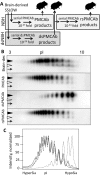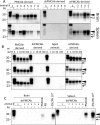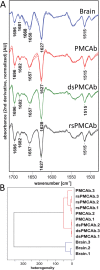Reversible off and on switching of prion infectivity via removing and reinstalling prion sialylation
- PMID: 27609323
- PMCID: PMC5017131
- DOI: 10.1038/srep33119
Reversible off and on switching of prion infectivity via removing and reinstalling prion sialylation
Abstract
The innate immune system provides the first line of defense against pathogens. To recognize pathogens, this system detects a number of molecular features that discriminate pathogens from host cells, including terminal sialylation of cell surface glycans. Mammalian cell surfaces, but generally not microbial cell surfaces, have sialylated glycans. Prions or PrP(Sc) are proteinaceous pathogens that lack coding nucleic acids but do possess sialylated glycans. We proposed that sialylation of PrP(Sc) is essential for evading innate immunity and infecting a host. In this study, the sialylation status of PrP(Sc) was reduced by replicating PrP(Sc) in serial Protein Misfolding Cyclic Amplification using sialidase-treated PrP(C) substrate and then restored to original levels by replication using non-treated substrate. Upon intracerebral administration, all animals that received PrP(Sc) with original or restored sialylation levels were infected, whereas none of the animals that received PrP(Sc) with reduced sialylation were infected. Moreover, brains and spleens of animals from the latter group were completely cleared of prions. The current work established that the ability of prions to infect the host via intracerebral administration depends on PrP(Sc) sialylation status. Remarkably, PrP(Sc) infectivity could be switched off and on in a reversible manner by first removing and then restoring PrP(Sc) sialylation.
Figures



References
-
- Prusiner S. B. Novel proteinaceous infectious particles cause scrapie. Science 216, 136–144 (1982). - PubMed
-
- Miller M. W. & Williams E. S. Chronic wasting disease of cervids. Curr. Top. Microbiol. Immunol. 284, 193–214 (2004). - PubMed
-
- Brown P. & Gajdusek D. C. The human spongiform encephalopathies: kuru, Creutzfeldt-Jakob disease, and the Gerstmann-Sträussler-Scheinker syndrome. Curr. Top. Microbiol. Immunol. 172, 1–20 (1991). - PubMed
Publication types
MeSH terms
Substances
Grants and funding
LinkOut - more resources
Full Text Sources
Other Literature Sources
Research Materials

